The Mike Toole Show
Best of Bandai
by Michael Toole,
We all saw it coming. For some of us, there were early signs: canceled re-releases, the lack of dubbed versions on some titles, and the occasional announcement of layoffs. But in the late 00s, this was par for the course for the anime business. For me, the warning signs came much earlier; I still vividly remember Anime Boston 2005, where Bandai Entertainment's big debut title was Scrapped Princess. The series had started its DVD release just a week earlier. Jerry Chu, Bandai's marketing manager, was as upbeat as ever, but in a brief exchange at the company's booth, he let slip that Scrapped Princess had only limped out of the gate, sales-wise. “Before digital fansubs,” he remarked, “this series would've been a good performer, but they're really starting to affect sales.”
This isn't going to be a screed castigating digisubs-- honestly, while they presented a big problem for the business, ultimately it was the collapse of video stores and hard media in general that caused the anime business to contract, after the thrilling bubble years of the early 2000s. Bandai Entertainment were right at the forefront of that bubble, so it's perhaps inevitable that they'd be among the hardest hit when it burst. Now, after a year that saw the company cease new acquisitions, they've gone ahead and announced the cessation of all of their publications. At least temporarily, a big chunk of anime is exiting the North American market. As fans, we have to ask the question: which shows will probably be back? Which ones should we scramble to buy while we can, before Bandai stops shipping in November? Let's address these questions.
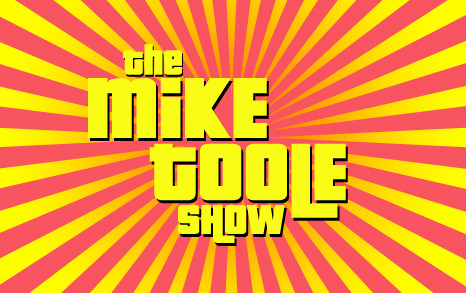
An awful lot of Bandai Entertainment stuff was really easy to like, and the company built on this appeal by positioning it on TV, getting it good exposure in video stores, and even releasing toy tie-ins. Their first big hit may have been Gundam Wing, but the company's signature series, which even now periodically appears on Cartoon Network and sells extremely well on DVD (as of right now, it's #7 on Amazon's anime chart, only outpaced by Ghibli movies and somewhat erroneously categorized Avatar: The Last Airbender sets), is Cowboy Bebop. Now, I realize that there are thousands of new anime fans every day and many of you haven't seen Cowboy Bebop, I'd be a little surprised if you haven't at least heard of Cowboy Bebop. A heady, virtuosic mixture of rusty, lived-in science fiction, kung fu fighting, hot jazz and pop music, and spaghetti western flicks, Bebop was like nothing we'd seen before (okay, maybe it was a teensy bit like its direct predecessor, Macross Plus). It was never a runaway hit in Japan, but Bebop’s success outside of the country spurred production of a sequel movie, and it's endured long enough that even now, new toys and merchandise are being planned for it.
I think Bebop is an excellent poster child for some of the problems the anime industry is facing these days, in fact. In Japan, it's getting a jazzed-up (ha!) blu-ray release at Christmas, packed with new artwork by character designer Toshihiro Kawamoto, new audio commentaries, and a brand new short novel by series scribe Keiko Nobumoto. Bebop wasn't a big hit in Japan on its debut (reports that it was unpopular are, in my opinion, a bit unkind - Spike, Faye, and Ed tracked really well on Newtype and Animage's character polls when it aired, and Sunrise caught a lot of flack from Japanese fans for broadcasting only half of the show on-air, while the other half went to pay channel WOWOW), but it's been one of the medium's biggest hits outside of Japan for the last decade. And right now, it's looking like there won't be a way for western fans to get those sweet, shiny blu-rays at all! Well, I doubt we'll be waiting too long - Bandai Entertainment will continue to sublicense their stuff to other anime publishers, after all, and considering Bebop is their evergreen sales leader, it's going to be a sweet plum for another publisher to acquire.

Actually, Bebop isn't the only Bandai joint that scored big in the west, but left a smaller impression at home. A few years prior to Cowboy Bebop, some of the same folks (mainly in the music department) worked on 1996's Vision of Escaflowne, a broadly entertaining fantasy adventure that offers a particularly flashy, artistic take on the “high school girl transported to another world” trope. There's a lot to like about Escaflowne; I still love the sequence of episodes where our heroine Hitomi meets a handsome blond prince in armor, is briefly infatuated with him, but then realizes that he's kind of a self-centered asshole. That kind of honestly in storytelling is pretty rare. Escaflowne also got a lot of new talent noticed, from burgeoning composer Yoko Kanno to the now-ubiquitous Maaya Sakamoto, who made her voice-acting debut as Hitomi. The subsequent movie retelling isn't nearly as crucial as the Escaflowne TV series, but it's still a very pretty film. Like Bebop, I find it pretty easy to picture Escaflowne getting picked up by another publisher.
Of Bandai's top-tier properties, it's hardest to predict where Mobile Suit Gundam will stand. The big reason that it wasn't snapped up in the early 90s by Manga Entertainment or ADV Films is because Sunrise and the Gundam Committee required an extraordinary, costly commitment to the entire brand; it wasn't enough to simply license the series for home video, there had to be positioning on TV, and there had to be toys on the shelves. In those days, nobody could pull this off-- nobody, that is, until Bandai entered the market themselves. Their aggressive pushing of Gundam Wing on Cartoon Network would prove prescient; the series itself wasn't outstanding, but its attractive and varied cast of heroes and complicated brew of action and politics captured the imaginations of a lot of young animation fans. To this day, Cartoon Network's Thanksgiving-weekend airing of the Endless Waltz OVAs remains one of the network's most-watched broadcasts ever. But these days, Gundam as a brand is sadly diminished. It's a juggernaut in its native Japan, but the franchise's most recent entry, Gundam AGE, hasn't seen release in the west at all. The company's high-toned Gundam Unicorn OVAs are going out for simultaneous worldwide release, but they're highly-priced and I don't see this strategy working for the rest of the Gundam oeuvre. You can bet on Bebop and Escaflowne staying in print somehow, but Gundam? I'm not so sure.
When Gundam Wing hit the airwaves and scored big, it opened the floodgates for a bunch of other properties. I was honestly surprised when one of the first entries, debuting a year after Gundam Wing, was Outlaw Star. Sure, it made a certain amount of sense - a Bandai Entertainment title with plenty of action and a great dub. But Outlaw Star also boasted a decidedly eastern flair, and slightly more objectionable bits that would need to be trimmed out for TV broadcast. But, just as with Gundam Wing, Cartoon Network's excellent TV campaign (man, I could watch these dumb things forever!) propelled the series to great heights. In another signature “geez, the anime business, am I right?” moment, creator Takehito Ito, buouyed by the show's international success, promised a sequel-- a sequel that never actually got made. I like Outlaw Star’s confident storytelling, its weird crew of misfits, and its unusual mixture of deep-space action and far-eastern lore, but it hasn't aged as well as others-- man, those character designs are ugly! The show is actually out of stock in a lot of outlets, so I wouldn't wait on this one; it did great on TV back in the day (did it directly inspire Joss Whedon's Firefly? I reckon it did...), but it was never as big on home video.
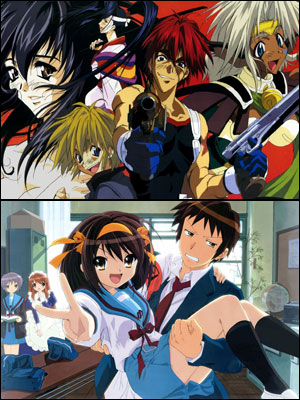
In terms of Bandai's top performers, that just leaves the Haruhi Suzumiya franchise. I've always kinda liked Haruhi - the series takes an assemblage of goofy stereotypes and formulaic situations and presents them in a really novel way, as the sardonic Kyon butts head with the titular antagonist, a bossy, boisterous high school girl who just might be the supreme being in disguise. I even liked the second season, in which director Yutaka Yamamoto trolls the franchise's fans with the great-in-concept, awful-in-execution “Endless Eight” series of episodes, a sequence that sounds like a neat twist on Groundhog Day, but gets boring awfully fast. Haruhi is recent enough that it'll probably stick around, one way or another - if any of its visual components are in danger of going out of print, I'd have to pick the Haruhi-chan gag shorts, which Bandai issued on two discs. I could see that stuff surviving as a pack-in in a “perfect collection” down the road, but who knows if that'll actually happen?
We've talked about the five titles that, according to Bandai chief Ken Iyadomi, were the company's most popular. With that out of the way, I'd like to focus on five more titles that didn't get enough love. I can't think of a better example to start with than Planetes. Remember Planetes? You might - the franchise was established here by TOKYOPOP, who issued the manga early on in their boom-inducing switch to unflipped, $9.99 paperbacks. I think the first time I realized that the rapidly cooling DVD market was really starting to hurt anime sales was in summer of 2005, just a few months after the Anime Boston I referenced at the start of this column. Bandai had positioned Planetes, Sunrise's generally excellent 2003 TV adaptation of Makoto Yukimura's superlative manga, as their big summer series, with plans for a series of six 2-disc special editions. But by midsummer, marketing chief Jerry Chu was admitting that the series was tracking poorly. Just a few months later, Chu had left Bandai, and the remaining two volumes were scaled back to single-disc releases. Planetes is a refreshingly direct, honest examination of space travel, following the trajectory of a near-future spacebound garbage man who, inspired by a younger colleague, follows bigger dreams. Along with four discs worth of extras in the single-volume release, Planetes got a particularly excellent dub. I'd be kinda surprised if it vanished completely-- but those extras might!
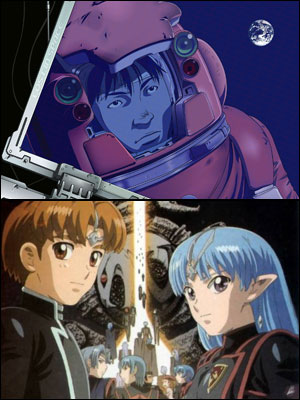
I really have to give Bandai Entertainment credit for not giving up early on Crest of the Stars. It has its fans-- pretty ardent ones, in fact-- but this franchise is not at all a typical anime hit, a thoughtful, large-scale science fiction epic in a sea of high school comedies and mecha action adventures. Its characters are still young, though alien princess Lafiel will almost certainly outlive her friend and potential paramour, human protagonist Jinto Lin. Lin is a minor player in an enormous intergalactic empire, but both he and Lafiel get pretty important as the aristocratic Abh empire goes off to war against the scrappy Four Nations Alliance. Crest of the Stars, and its sequel Banner of the Stars, comprise a charmingly weird mixture of feudal politics, hard sci-fi, and low-key romance. The franchise never got a primo TV slot, but most of it (Bandai never did figure out a way to release the two-episode Banner of the Stars III or the 30-minute Fragments of the Stars OVA) remains in print for now. If you like vast interplanetary warfare, taciturn elfin space princesses, or kooky made-up space languages, It's worth checking out.
Dammit, Eureka Seven was supposed to be huge. A high-profile, big-budget TV series from BONES, the Cowboy Bebop people, the show had a large cast of fun characters, flashy sky-surfin’ mecha, great music and songs, and even manga and model kit and video game tie-ins. It was hotly anticipated enough that, when Bandai Entertainment got the first trailer from Japan, Jerry Chu hurriedly dubbed it himself (doing voiceover as protagonist Renton Thurston) to ensure that it would be plugged on their DVDs as soon as possible. And honestly, it's not as if Eureka Seven did badly-- it aired on Toonami, after all, and the follow-up movie retelling got released here as well. But the single-disc releases, plagued by production errors, never seemed to sell all that well. You can still get the show's two complete sets, and with Funimation's licensing of the new sequel Eureka Seven: AO, I'd be surprised if we didn't see this sky-surfing back our way soon. I just thought it'd be bigger.
Another high-profile series that never seemed to quite break through is Lucky Star. The series boomed in Japan and as a digital fansub, but it never quite seemed to find a home in North America-- ignominiously, the final volume's special edition release was canceled after a run of SEs that included great insert CDs and amazing, embarrassing t-shirts, and the OVA sequel didn't even get dubbed. I've watched all of Lucky Star from start to finish, and I think there are reasons why it didn't capture American anime fandom's imagination enough to get on TV and be a big hit. Even by our favorite medium's bizarre standards, Lucky Star is pretty weird-looking, with an over-bright color palette and squishy, cutesy character designs. More than that, it's lacking in story. It has funny jokes and amusing characters, but it just lacks structure. Azumanga Daioh, which is probably Lucky Star’s closest cousin from a storytelling perspective, still has overlapping arcs that provide senses of establishment, continuity, and closure. Lucky Star never quite gets there. Despite that, ardent fans still love it; at Otakon this past summer, fans clamored to see seiyuu Aya Hirano re-enact her character Konata's aping of a 1980s shampoo commercial.

Last but not least, I'll hit on one of Bandai's final AAA titles - K-On! K-On came late enough in the game that it pretty much didn't have a chance to succeed. I actually quite like what I've seen of it (though I wish the music was less polished), and am amused to see a series that seems to follow the harem formula, but skips much of the bad comedy by omitting the callow male protagonist entirely. What we're left with is the gag-filled story of a pack of pretty high school girls who join a failing music club as an excuse to hang out, but end up forming a pretty good band. K-On! wasn't helped much by its release details, opting for a single-volume release plan when just about everything else was coming out as box sets. Further irritating fans was the blu-ray release, which sported an interesting technical wrinkle: Dolby 2.0 audio instead of the Japanese release's 5.1. Was it a simple mistake, or a conspiracy to ensure that Japanese fans don't buy a cheaper but technically inferior overseas product? Either way, it doesn't seem to have worked - hilariously, if you search for K-On at Amazon Japan, all of the top results will be for North American stuff! Fortunately, Bandai did sneak out a cut-rate Anime Legends collection as one of their absolute last releases. And with Sentai Filmworks rescuing both the second season and the original's dub cast, I wouldn't be shocked to see the first season quietly added to their catalog in the future.
We've talked big hits, we've talked almost-hits, now let's talk about a few titles that are, quite literally, almost gone-- stuff that's completely out of print, and starting to vanish entirely from the retail level. I've touched on this subject before, and my favorite example from Bandai Entertainment is still Zegapain. Zegapain never had a big chance in North America without the ancillary products like model kits and video games that Japan got, but it's a solid shonen mecha series that bucks convention in a few surprising ways, and establishes a sinister doomsday scenario that reveals just enough, per episode, to keep you wanting more. I had to search long and hard for volume 4 of the series, which my friend James finally unearthed. Now, both volumes 4 and 6 have fallen off the face of the earth, and are only available by hilariously high aftermarket pricing. Fans might've gotten a respite from this, but Bandai's planned release of a Zegapain collection was cancelled.
Bandai also cancelled the complete collection of FLAG, Ryosuke Takahashi's neat, compelling war thriller, told from the point of view of embedded journalists. I like Takahashi a lot, but his spare, clinical stories of mecha warfare have always been a hard sell over here. I got lucky with FLAG-- a few years ago, the single-volume releases flooded into Big Lots stores, and I was able to nab all four for $3 each. A few cycles of clearance sales later, one of those four volumes can no longer be bought at retail. More's the pity. My other favorite out-of-print Bandai mecha series is King Gainer, but I've talked about that one pretty extensively in my Yoshiyuki Tomino column.
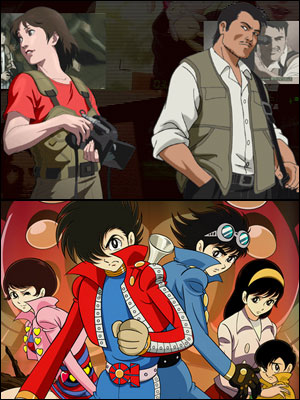
I was so excited when I saw the first stills and Newtype Japan magazine articles for Kikaider. I've always liked Shotaro Ishinomori's works, and coincidentally, I was watching episodes of the original Kikaider live-action TV series when news of an anime remake came down the pipe. And Bandai Entertainment really believed in Kikaider, too-- the show, an early digipaint deal, was a low-budget affair that looked way more retro than its peers, but that didn't stop them from getting it onto Adult Swim. Ishinomori's nihilistic tale of a powerful android struggling with his conscience as he battles his amoral brethren never quite caught on. Years later, even the complete collection, which includes the OVA sequel Kikaider-01, is gone from store shelves, with its used price creeping upwards.
Galaxy Angel is an old favorite of mine, and another series that Bandai stuck with until the bitter end. Unfortunately, the end was fairly bitter - I've always thought Galaxy Angel’s brief, comical space adventures were a good fit for TV, but it never made it there, and flagging sales caused Bandai to abandon the above-average dubbed version with just a few episodes remaining. This still leaves me gobsmacked - the company dubbed 63 episodes, but left the last seven undubbed. Seriously, why not finish the damn thing?! Anyway, Bandai experimented a lot with the franchise's release plans-- the first two seasons were released as single discs and then brick packs, but Galaxy Angel A, season 3, went straight to brick pack. I was OK with this, because it was cheap, but then season 4, Galaxy Angel AA, went back to singles! And the final season, Galaxy Angel X, went back to brick pack. Most of Galaxy Angel is still easy to find-- most of it. That brick-only third season is gone from stores, and goes for close to $100 at places like eBay. I wish they could've done better with it, it's a really fun little show.
The Girl Who Leapt Through Time is one of those all-too-rare reasons that I love the medium so much. It's got elite talent (director Mamoru Hosoda and character designer Yoshiyuki Sadamoto), an original story, and an excellent visual style. It's also one of those rare anime stories where the teenage heroes act like teenagers-- they're all awkward and dumb and lovelorn and just trying to get through the day without being completely humiliated. I was attracted enough to the premise of the film - a high school girl discovers a way to make short jumps back in time, and tries to “fix” her life using this gimmick - enough that I traveled to the New York Children's Film Festival to see it. It took awhile for a video release, but Bandai eventually stepped up to the plate. The lavish DVD special edition release is still available - but the single-disc, bare-bones blu-ray, which is still the version I'd rather have? Gone baby, gone.
So we've talked about Bandai Entertainment's big hits, their sleeper hits, and the stuff that didn't get the attention it deserved. You know what's left, right? It's the “what the hell were they thinking?!” pile! I can already picture you hopping up and down in your chairs, yelling “DAN DOH! DAN DOH!” Well, Jerry tried to explain Dan Doh in the podcast. How about Junkers Come Here?

God, I love that cover art more than I love my own son! Good thing I don't have any kids. Anyway, the intriguing blend of comic sans font and ill-formed word balloon conceals a perfectly good little family movie, albeit a strange one. How many coming-of-age movies are magical realist tales of little girls coping with parental divorce with the help of a talking, wish-granting schnauzer who loves samurai movies? Another “why did they release this” all-star is Future GPX Cyber Formula. Take a gander at this:
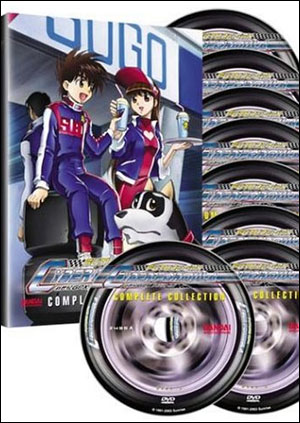
I love the way the dog is looking at the camera, as if to say “Seriously, why does this DVD release exist?” This 37-episode, sub-only boat anchor has got to be one of those contractual obligation releases. Like, the licensing manager at Sunrise was all “Okay, we'll let you have Cowboy Bebop, but you must also release... this!” Thanks a lot, Japan! Amusingly, after being priced down to $30 at most outlets, Cyber Formula actually sold out. I guess $30 was the right price!
Don't Leave Me Alone, Daisy was one of Bandai Entertainment's earlest VHS releases, but it took forever to make the jump to DVD. I'm kinda surprised it even made that jump - it's a show that excellently showcases a huge cultural gap, as science nerd Techno falls for classmate Hitomi and tries to win her affections with the help of robots, death rays, and insistently calling her “Daisy” above her objections. Now, Japanese audiences might've watched it and went “Awww, that besotted dork will do anything to capture her heart!,” but American audiences were more like “Oh god, he's going to kill her! Why is he threatening her?!” One reviewer on Amazon thinks the show was unfairly judged. I don't know, man.
Bandai made history with Tenamonya Voyagers, the first anime to be released in North America only on DVD, with no accompanying VHS release. This was during that messy transition from VHS to DVD, and there were some VHS buyers who felt left out in the cold, because they hadn't yet noticed that you could buy a perfectly good DVD player for $40. Tenamonya Voyagers, a 4-episode OVA, has some finer points - nice character designs by Masashi Ishihama, and it's an early directorial effort by Akiyuki Shinbo. It doesn't really get that Shinbo style until episode 4, when the gang of girl protagonists beats a heatwave by stripping down and then using an increasingly outlandish series of props to conceal their naughty bits. But Tenamonya Voyagers’ driving appeal is its complicated web of visual pop culture references and quotes, a list so dense and intricate that even my Japanese friends couldn't begin to place them all (one correspondent was IDing snips of dialogue and scenes lifted from mid-70s variety shows). With no liner notes to explain this, Tenamonya Voyagers is just a moderately interesting OVA with, as is typical for OVA releases, a horrible, awful non-ending. Not a very auspicious choice for first-ever DVD-only anime!
Last-- finally!-- last but not least, there was Saber Marionette J. Who remembers Saber Marionette J? Because seriously, I kinda fucking don't.
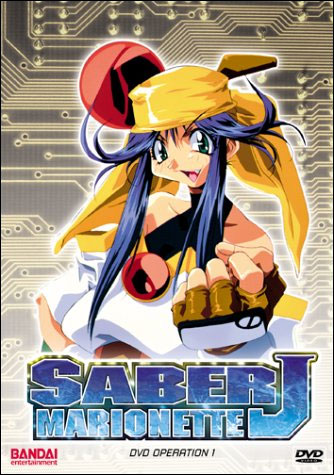
Her name is Lime, right? Jesus, what's with the fangs? I remember something about squeaky shoes, and squeaky Megumi Hayashibara, and other robot girlfriends, and some sort of bitchy rival dude. It was on another planet, but it was in ancient Japan.... seriously, can anyone explain to me why this entire thing-- middling TV series, blah OVA sequel, and awful TV sequel-- got released? Does anyone even remember what happened in this show, off the top of their heads? No looking at Wikipedia, that's cheating! I'm fascinated, because I don't remember there being a culture or phenomenon around this show, but we still got the whole damn thing. Ten years later, are there any fans left?
Alright, so I didn't talk about Big O, or Code Geass, or Gurren Lagann. I didn't mention Silent Mobius, or Brain Powered, or s-CRY-ed, or Betterman, or Tide-Line Blue. I didn't touch on Mars Daybreak, or Panda-Z, or Eat-Man, or Haunted Junction, or Ghost-Slayers Ayashi. No love for Star Driver, or Kannagi, or Toward the Terra. Hey, what the hell do you want from me? If I talked about all of this stuff, the damn column would be 10,000 words long! At any rate, Bandai Entertainment's had a long reign in the American anime biz. I'm not really happy with the way they've spun their operation down - I still really feel like bean-counters in Japan put the kibosh on a very modest but sustainable business - but them's the breaks. We'll definitely see some of these titles quietly get picked up by other publishers, but not all of them. How about you? Are you just biding your time for those Cowboy Bebop blu-rays? Are there any shows you're scrambling to buy, now that the rush is on? Are there any shows you've already missed the boat on? What was your favorite Bandai Entertainment release? Sound off in the comments!
discuss this in the forum (139 posts) |